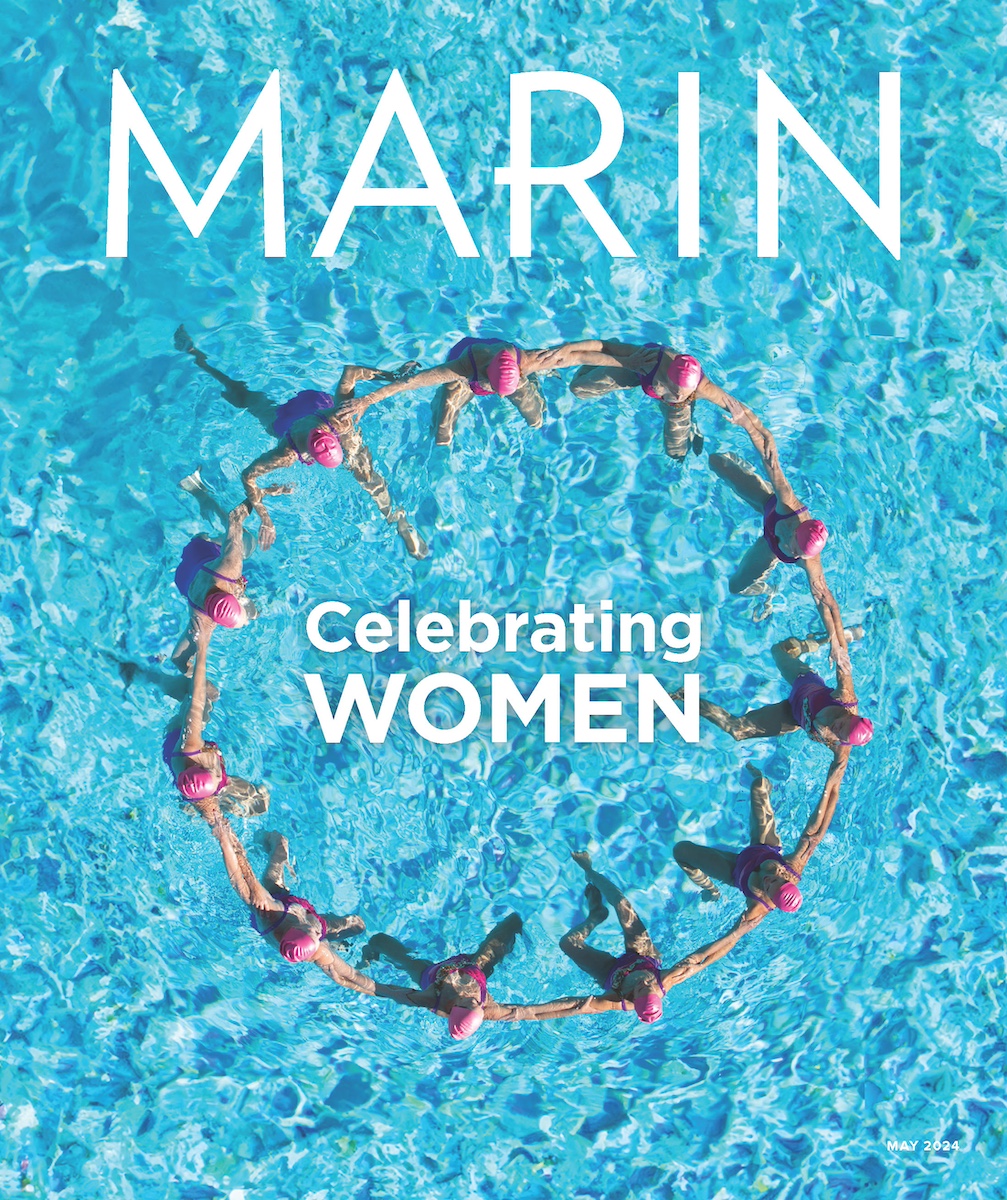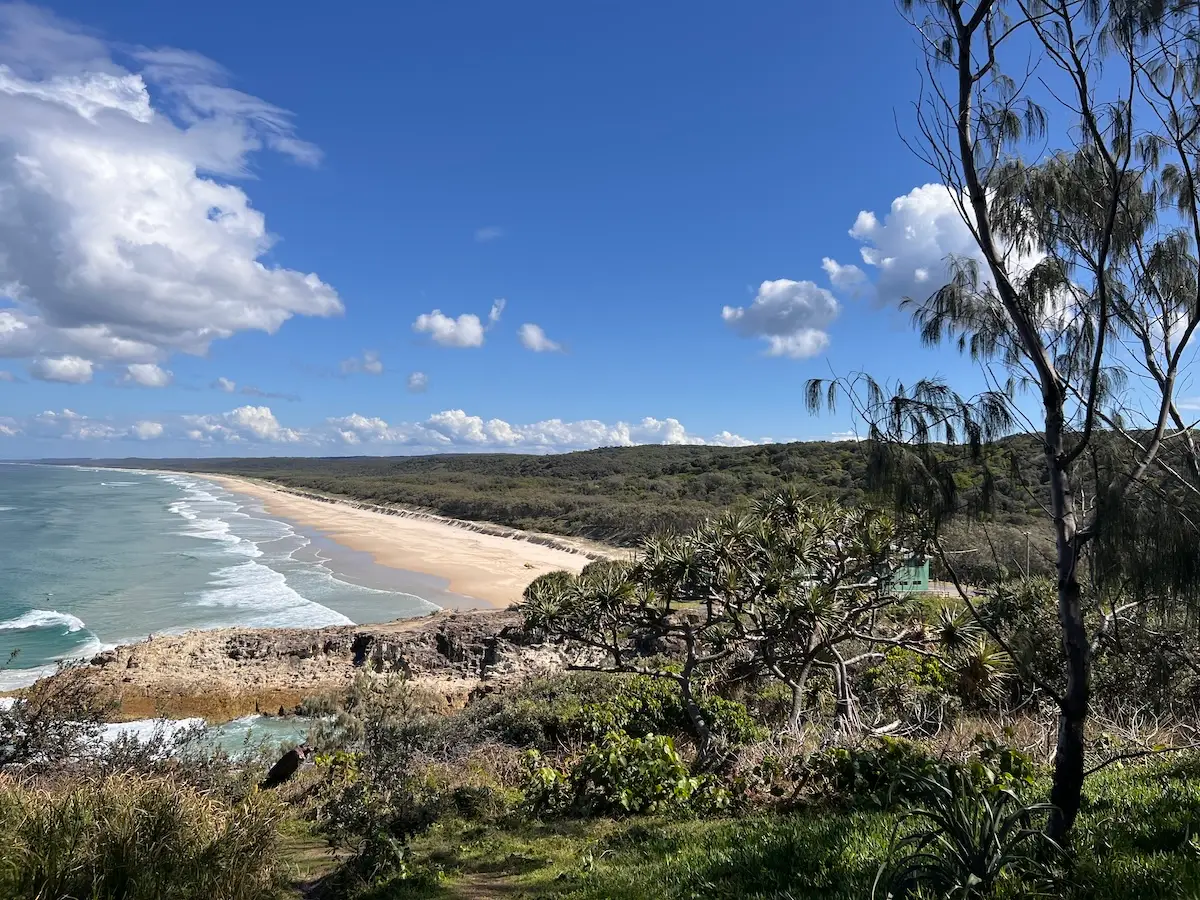“I’ve found you a koala,” guide Delvene Cockatoo-Collins whispers, shortly after meeting the ferry across Moreton Bay from a suburb of Brisbane, Australia, to her home island of Minjerribah.
An award-winning artist whose Quandamooka heritage inspires her prints and wearable art, Cockatoo-Collins leads private tours on the world’s second largest sand island, also known as North Stradbroke Island. The iconic marsupial she had spotted dozing in a bayside tree was the first in a series of native wildlife we encountered on my half-day tour — a clutch of kangaroos, several breaching humpback whales and one enormous swimming sea turtle followed — but hearing her stories connecting both flora and fauna to her ancestors made those sightings even more special.
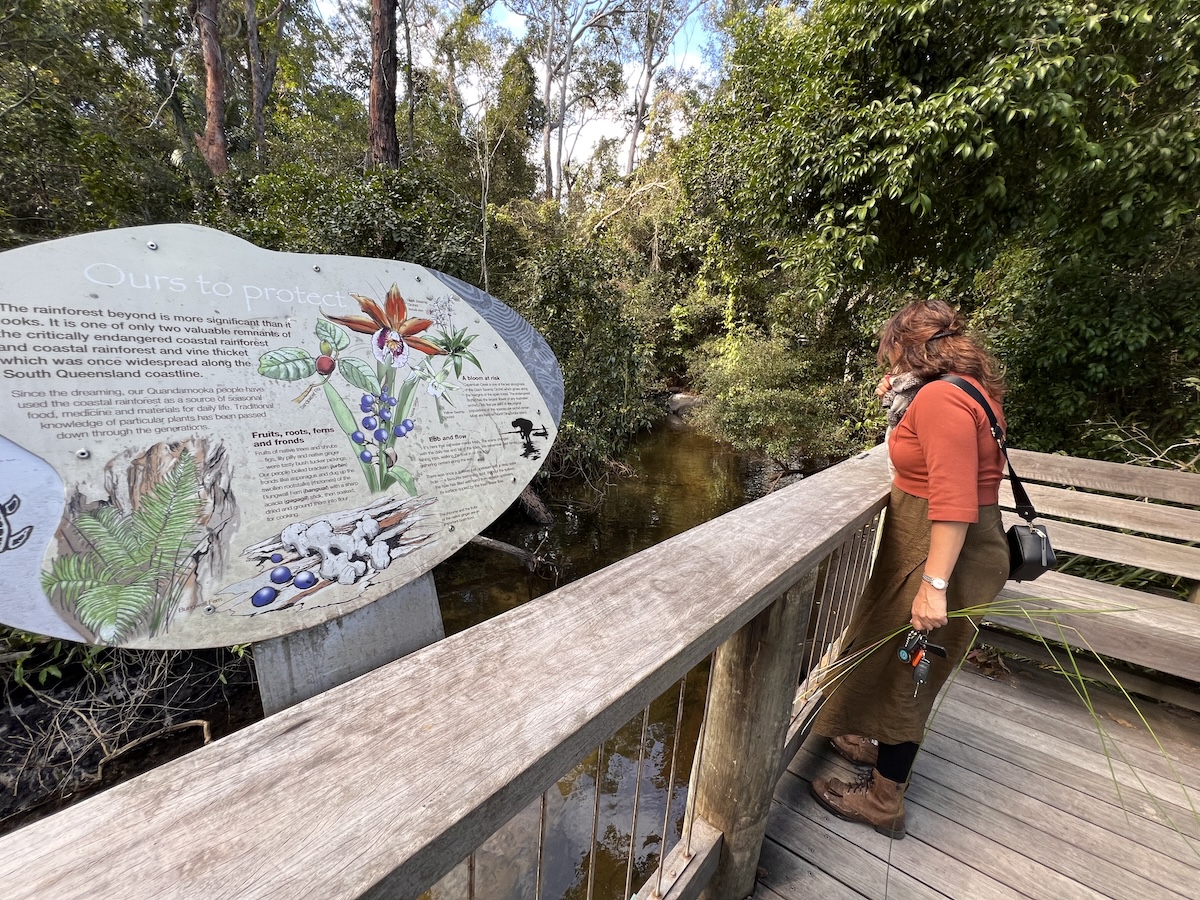
At the leafy oasis of Myora Springs, for example, native birdsong filled the air as Cockatoo-Collins collected freshwater reeds for weaving. Her foremothers used them to create dilly bags, reticule-style purses for collecting food. One woven by her grandmother’s grandmother remains one of the prize Aboriginal artifacts on view down the road at the North Stradbroke Island Museum on Minjerribah, while another is in the Smithsonian, according to Cockatoo-Collins. “I’m hoping they’ll return it to us,” she notes.
At Bummiera, nicknamed Brown Lake due to the tea-like tint to its otherwise clear water, Cockatoo-Collins shared the local legend of a rainbow serpent that lives in its waters. The Quandamooka — an umbrella term for the island’s Nunukul, Nughie and Goenpil people — traditionally warn their kids not to disturb it by swimming across the lake. “I still wouldn’t swim across it,” Cockatoo-Collins confides.
Long used for sand mining, and for 80 years before that as a government home for the elderly and destitute, Minjerribah and Moreton Bay only returned to native hands in 2011, thanks to a federal ruling. “Straddie,” as the island is also nicknamed, has become a popular site for surfing and beach holidays. Signs of new growth are everywhere, from the plantings of eucalyptus that help support the threatened koala population to a growing number of related enterprises operated by Quandamooka residents. Perry’s Seafood, next to Cockatoo-Collins’ studio and boutique, features her bold prints of turtles, whales, dilly bags and other designs on tea towels, artful clothing and accessories.
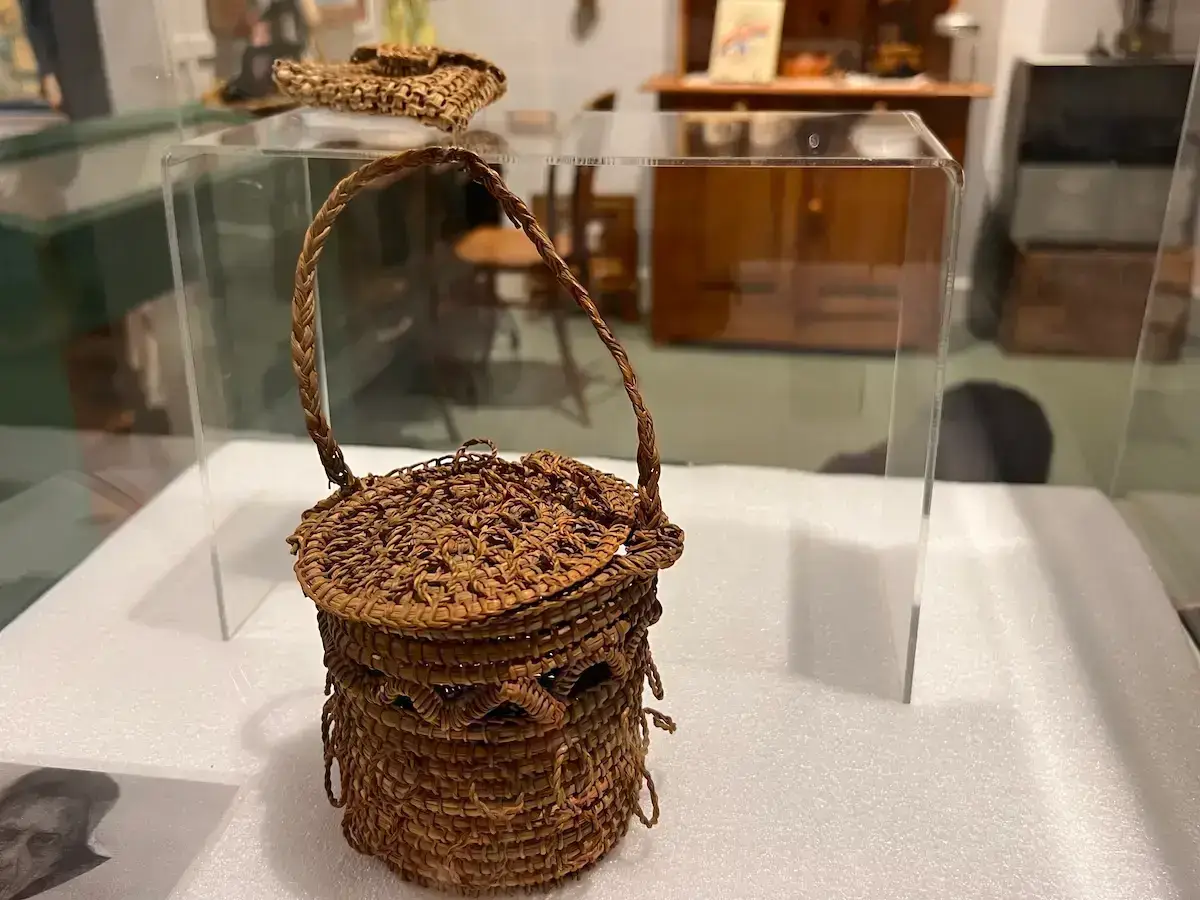
In Bundaberg, a 45-minute flight north of Brisbane, Taribelang Bunda Cultural Tours also provides the opportunity to learn the history — at times, devastatingly painful — of the region’s Indigenous people while gaining a new appreciation of their natural environment. Their tours traverse the fertile land around the Burnett River, which now hosts fruit farms, Australia’s leading rum distillery and Bundaberg Brewed Drinks, the producer of stout brown bottles of ginger beer and other fizzy beverages. It also includes a stop overlooking an island in the river, where in 1850 settlers massacred 2,000 Taribelang Bunda of all ages in retaliation for the death of one Englishman. “We don’t do it to make people cry, but to understand,” guide Bec Domaille explains. “We’re about making connections.”
Bundaberg’s annual Milbi Festival, Oct. 25–Nov. 3 in 2024, also connects visitors with Indigenous people and their culture. Named for the loggerheads and other sea turtles that return every year to lay their eggs, it also celebrates the return of Aboriginal elders who as children were sent away by the Australian government for forced assimilation.
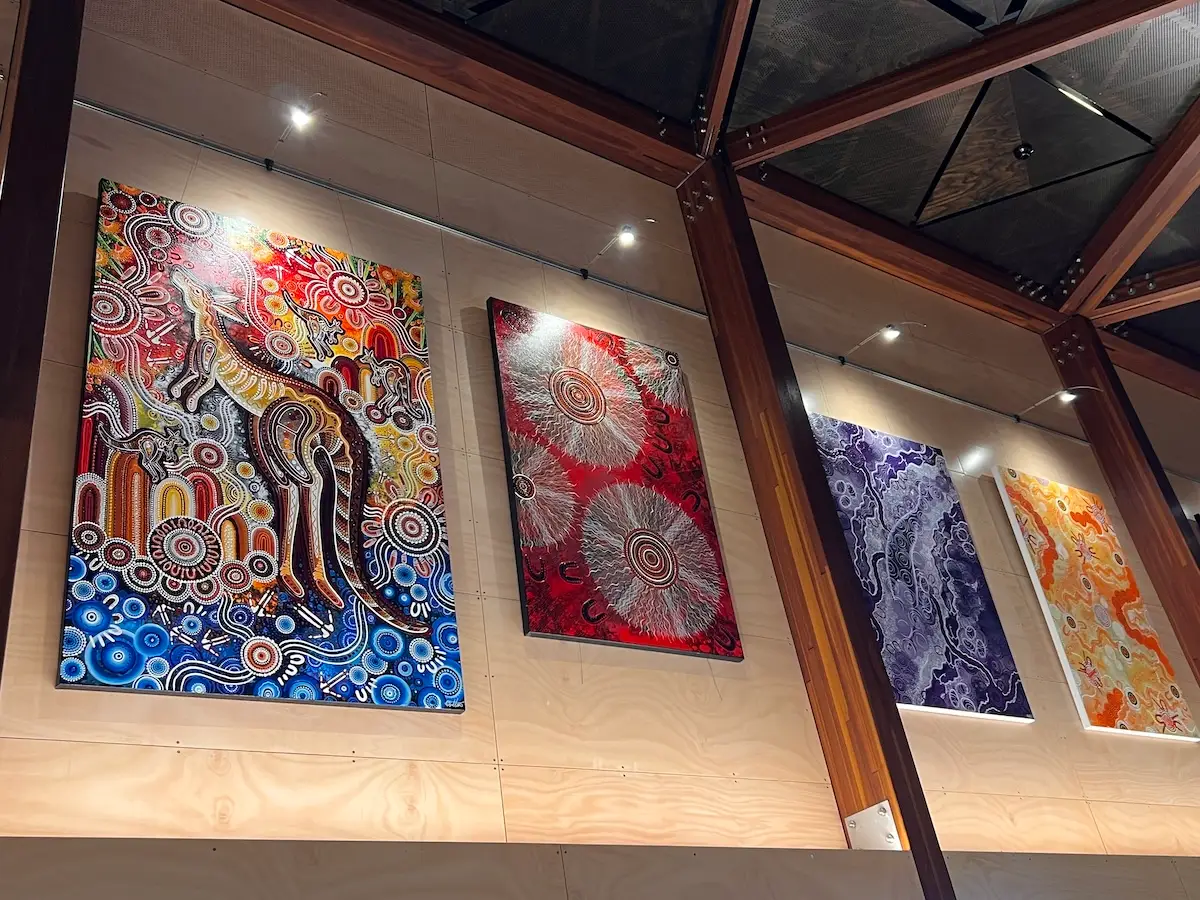
Learn more about the fascinating, endangered loggerheads at Bundaberg’s Mon Repos Turtle Centre, which leads guided evening tours during the nesting season of November through March and presents year-round exhibits and “turtle talks.” Inside the high-ceilinged center, look up to see the rainbow of intricately dotted, vibrantly hued paintings of three young Indigenous artists of rising fame: sisters Chern’ee and Brooke Sutton and brother Jesse Sutton. Their Kalkadoon ancestors were nearly wiped out by the local police and settlers in the 1880s, but the siblings’ art serves as a brilliant reminder that Queensland’s Indigenous spirit survives — and is worth seeking out.
Delvene Cockatoo-Collins, cockatoocollins.com. 3-hour tours and workshops from $100.
Taribelang Bundaberg Cultural Tours, bundaculturaltours.com.au. 3-hour tours from $66.
